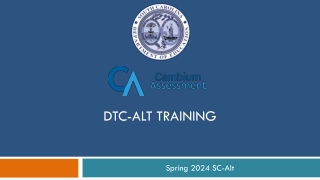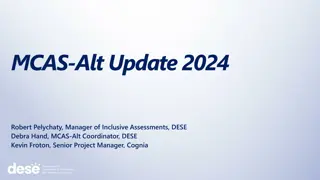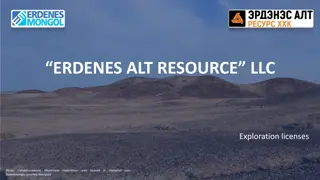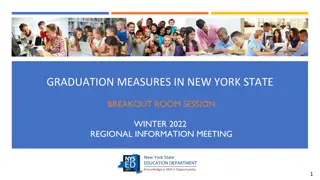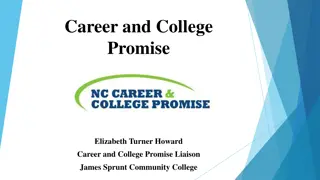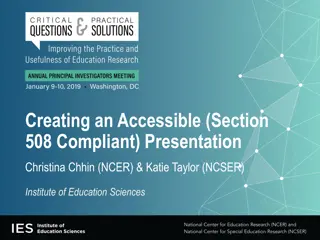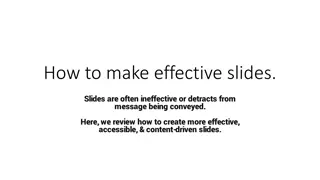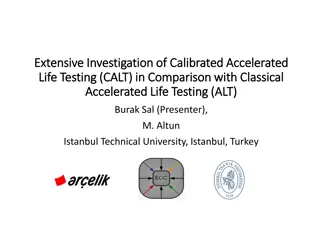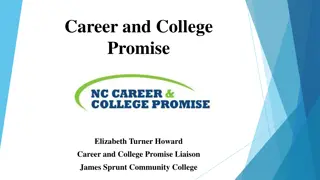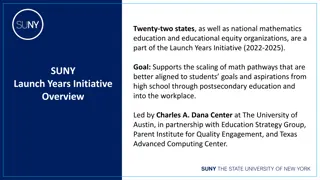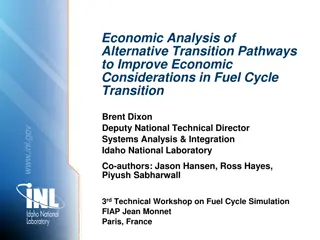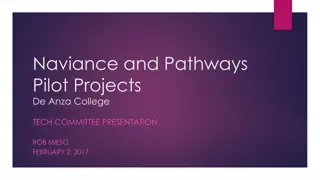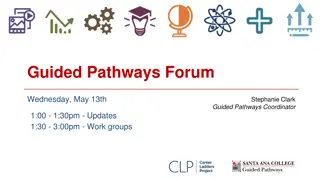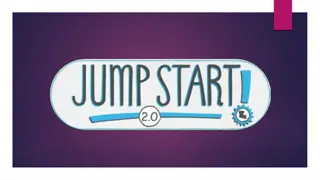
ELOs Driven by Student Interest: Creating Meaningful Learning Experiences
Explore high-quality ELOs focusing on student-driven interests, competencies, and community partnerships. Foster critical thinking skills through reflection, presentation, and end products that showcase learning outcomes. Discover ELO possibilities for a student with a learning disability like Dana, including yoga-related English, career exploration, physical education, anatomy, world history, and more. Understand the significance of ELOs in transition planning for students with disabilities and at risk. Identify key participants involved in ELO development, such as interested students, certified educators, and ELO coordinators.
Download Presentation

Please find below an Image/Link to download the presentation.
The content on the website is provided AS IS for your information and personal use only. It may not be sold, licensed, or shared on other websites without obtaining consent from the author. If you encounter any issues during the download, it is possible that the publisher has removed the file from their server.
You are allowed to download the files provided on this website for personal or commercial use, subject to the condition that they are used lawfully. All files are the property of their respective owners.
The content on the website is provided AS IS for your information and personal use only. It may not be sold, licensed, or shared on other websites without obtaining consent from the author.
E N D
Presentation Transcript
Components of High Quality ELOs Driven by student interest. Defines the learning outcomes through identified competencies and the student learning is evaluated against those competencies. Involves community partners.
Components of High Quality ELOs Promotes critical thinking skills through reflection and presentation to articulate what they have learned. End product demonstrates what was learned.
ELOs can be Individual or group Out of school or connected to a class Large scale or small scale Interdisciplinary or subject specific For any student In any subject Source: www.beyondclassroom.org
Dana is a 17 yr old junior with a learning disability: School is a challenge and she struggles with how fixated her friends are on material items. Its not something she values. Using her interest in yoga- what types of ELO s could you create?
ELO Possibilities English- reading/researching yoga Career- learning about being a yoga instructor Physical Education- yoga class Anatomy & Physiology- how muscles move, the effects on breathing and heart rate World History- the history of yoga & its significance in different cultures Anything else
Making the Connection to Students & Transition Planning Not everyone does well sitting in a classroom. Real world learning often works best for students with disabilities and students at risk. Community connections and concrete, hands on learning provide support to reach measureable post secondary goals. ELOs are a means of assessment. ELOs can be part of the course of study.
Identifying the Key Participants Student Has an interest or passion, and a desire to explore learning Certified Educator To work with the student & ELO coordinator on identifying competencies and assessing learning ELO Coordinator Coordinates the different aspects of an ELO including agreements with partners, DOL approval, communication with all parties
Identifying the Key Participants Families Need to support the student, agree to the ELO and may assist in identifying the community partner Community Partner/Mentor Provides the expertise for what the student wants to learn
Community Partners. Work with the student, and certified educator to create the ELO. Provide the expertise/information. Provide assistance on determining the student s understanding of the subject matter. You will need a working knowledge of your school insurance policy and familiarity with the NH Department of Labor rules. More on this in day 2
Resources for Developing ELOs Beyond Classroom Lebanon High School Pittsfield Middle High School Next Steps New Hampshire New Hampshire ELO Network
Research What does the student want to learn? Articulates the question(s) that guides the learning. (Essential Question) Explores where the student will find the information they want to learn. Identifies the resources the student needs Community Mentor On line resources College classes
Essential Question. What Drives the Learning? A good essential question can help shift students toward ownership of learning. Essential questions can be thoughtful, provoking, and philosophical and they should never have a simple (or google- able ) answer. The community partner can serve as a sounding board as the student works through and refines his or her own answer for the essential question. Source: www.beyondclassroom.org
Examples of Essential Questions What can current politicians learn from previous leaders? What are the needs of a depressed high school student? How does a leader maximize the effectiveness of a group? Source: www.beyondclassroom.org
Reflection Provides information on what the student is learning, how they are learning and the connections they are making. Allows educators and community partners the opportunity to evaluate learning and provide feedback. Shows the evolution of thought and understanding.
What Does Reflection Look Like? Reflection can be: A journal A blog Correspondence Weekly narrative The goal is to document the progression of learning, connections between experience, research, critical thinking and growth.
Projects The concrete, tangible display of the student s learning. Projects can include: Portfolios Research papers Depending on the ELO it could be a building, website, a manuscript ..the possibilities are endless Product needs to reflect what the goal of the ELO was and answer the essential question that was generated to guide learning.
Presentation Opportunity for the student to share their ELO- the depth of their learning and grasp of the critical components of their ELO. Pulls together all the aspects of the ELO process to demonstrate their learning. Involves community partner, ELO Coordinator, educator and family.
In Other Words If an Educator wants to teach a new course, they would: Content area (Research) Competencies/learning outcomes (Research) Materials to draw knowledge from (Research) Assessments of learning and understanding (Reflection, Presentation & Product) ELOs: a course created by a student s interest, using an essential question and a community partner.
Inspiration Pep talk to Teachers & Students
Almost ELOs into ELOs Think about your school. Do you currently have students in situations that are almost ELO s ? What steps could you take to turn an almost ELO into an ELO?
Assessing the Quality of an ELO In developing an ELO, all partners need to know what the expectations are and how the ELO will be assessed. No surprises! Share rubrics/assessment tools with partners Set clear expectations regarding communication More on this day 2
SOAR Analysis Strengths What are you doing well? Opportunities What resources/prospects do you have available? Aspirations What do you want your program to be? Results How will you know you have the program you want?
SOAR Using the asset-based SOAR approach, reflect on your school and your current ELO program. Document your strengths, opportunities, aspirations and results using the questions below to generate conversation. The information you record will guide your implementation efforts regarding ELO's.
Wrap up ELOs can happen in any subject area ELOs involve Research, Reflection, Product & Presentation There are a wide variety of ELO planning tools available to assist in the development of ELOs Please take the post test and complete the evaluation form- Thanks!
Next Time Program structures See you on the 30th!

